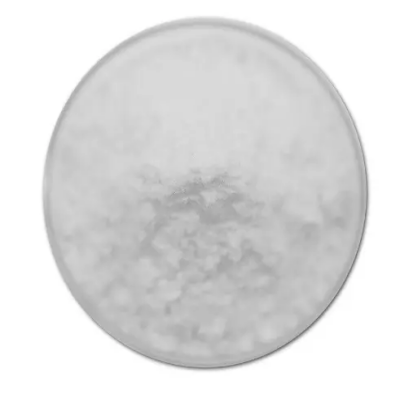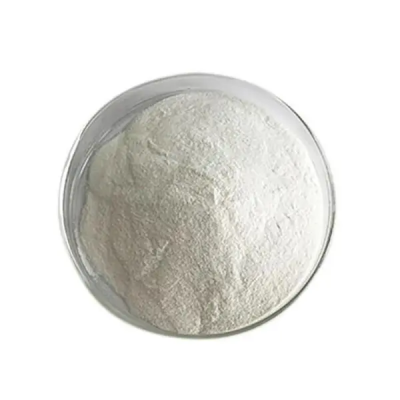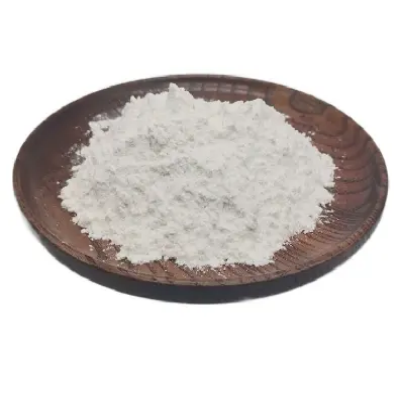-
![imidazo[1,2-a]pyridine-7-carboxylic acid hydrochloride CAS:1423031-35-9](https://cdn.globalso.com/xindaobiotech/1ZNB2ZF342ZWRNG33.png)
imidazo[1,2-a]pyridine-7-carboxylic acid hydrochloride CAS:1423031-35-9
Imidazo[1,2-a]pyridine-7-carboxylic acid hydrochloride is a chemical compound featuring an imidazopyridine core with a carboxylic acid functionality, in the form of its hydrochloride salt. This versatile compound exhibits unique reactivity and structural characteristics, making it valuable for various applications in organic synthesis, pharmaceutical research, and material science.
-

Ethyl N-Boc-2,5-dihydropyrrole-3-carboxylate CAS:146257-00-3
Ethyl N-Boc-2,5-dihydropyrrole-3-carboxylate is a vital chemical compound widely utilized in organic synthesis and pharmaceutical research. With its unique molecular structure, this compound serves as a valuable building block for the construction of diverse molecules and pharmaceutical intermediates. Its functional groups and reactivity make it an essential component in the creation of compounds with potential applications in drug development and medicinal chemistry.
-

methyl 4-(1-aminocyclopropyl)benzoate hydrochloride CAS: 1014645-87-4
Methyl 4-(1-aminocyclopropyl)benzoate hydrochloride is a significant chemical compound used in organic synthesis and pharmaceutical research. This compound, possessing valuable reactivity and structural properties, serves as a crucial building block for the preparation of various organic molecules and pharmaceutical intermediates.
-
![(4aS,7aS)-Octahydro-1H-pyrrolo[3,4-b]pyridine CAS:151213-40-0](https://cdn.globalso.com/xindaobiotech/6FOL1BS0UMD0X9Z40241.png)
(4aS,7aS)-Octahydro-1H-pyrrolo[3,4-b]pyridine CAS:151213-40-0
(4aS,7aS)-Octahydro-1H-pyrrolo[3,4-b]pyridine is a bicyclic organic compound with the molecular formula C8H13N. It exists as a colorless to pale yellow liquid and is characterized by its distinct pyrrolopyridine structure. This compound serves as a versatile intermediate in organic synthesis, particularly in the production of pharmaceuticals, agrochemicals, and specialized chemical compounds.
-

ethyl 2-ethylcyclopropanecarboxylate CAS:115188-22-2
Ethyl 2-ethylcyclopropanecarboxylate is a significant chemical compound with versatile applications in organic synthesis and pharmaceutical research. As an ester derivative, it serves as a crucial building block for the synthesis of diverse organic molecules and pharmaceutical intermediates, making it valuable in research and development efforts.
-

EDDHA FE 4.8 CAS:16455-61-1
EDDHA-Fe is a new plant nutritional supplement, with features of high solubility, high efficiency, quick effect, and wide suitability, etc. It can be rapidly absorbed by crop from PH3 to PH10; EDDHA-Fe has significant effects on Yellow-leaf Disease of fruiter, vegetable and crop, caused by iron deficiency; it can promote the chlorophyll synthesis of crop, enhance the photosynthesis and increase the yield effectively
-

cis-2-Methylcyclopentanol CAS:25144-05-2
cis-2-Methylcyclopentanol is a significant chemical compound widely utilized in organic synthesis and industrial applications. Its distinct molecular structure and reactivity make it an essential building block for the creation of diverse molecules and chemical intermediates, contributing significantly to various scientific and industrial endeavors.
-

5-methoxypyrazin-2-amine CAS:54013-07-9
5-methoxypyrazin-2-amine is a significant chemical compound utilized in organic synthesis and pharmaceutical research. With its unique molecular structure, it serves as an important building block for the creation of diverse molecules and pharmaceutical intermediates, contributing significantly to various scientific and industrial applications.
-

4-methoxypyrimidine-2-carbonitrile CAS:94789-37-4
4-methoxypyrimidine-2-carbonitrile is a valuable chemical compound used in organic synthesis and pharmaceutical research. With its unique molecular structure, it serves as an essential building block for the creation of diverse molecules and pharmaceutical intermediates, contributing significantly to various scientific and industrial applications.
-

6-chloro-9-methyl-9H-purine CAS:2346-74-9
6-chloro-9-methyl-9H-purine is a significant chemical compound utilized in organic synthesis and pharmaceutical research. With its unique molecular structure, it serves as an important building block for the creation of diverse molecules and pharmaceutical intermediates, contributing significantly to various scientific and industrial applications.
-

6-chloro-7-methyl-7H-purine CAS:5440-17-5
6-chloro-7-methyl-7H-purine is a significant chemical compound utilized in organic synthesis and pharmaceutical research. This compound serves as an important building block for the creation of diverse molecules and pharmaceutical intermediates, contributing significantly to various scientific and industrial applications.
-

4-chloro-5-fluoro-1H-indazole CAS:1420068-88-7
4-chloro-5-fluoro-1H-indazole is an important chemical compound with versatile applications in organic synthesis and pharmaceutical research. Its unique molecular structure and reactivity make it a valuable building block for the creation of diverse molecules and pharmaceutical intermediates, contributing significantly to various scientific and industrial endeavors.

